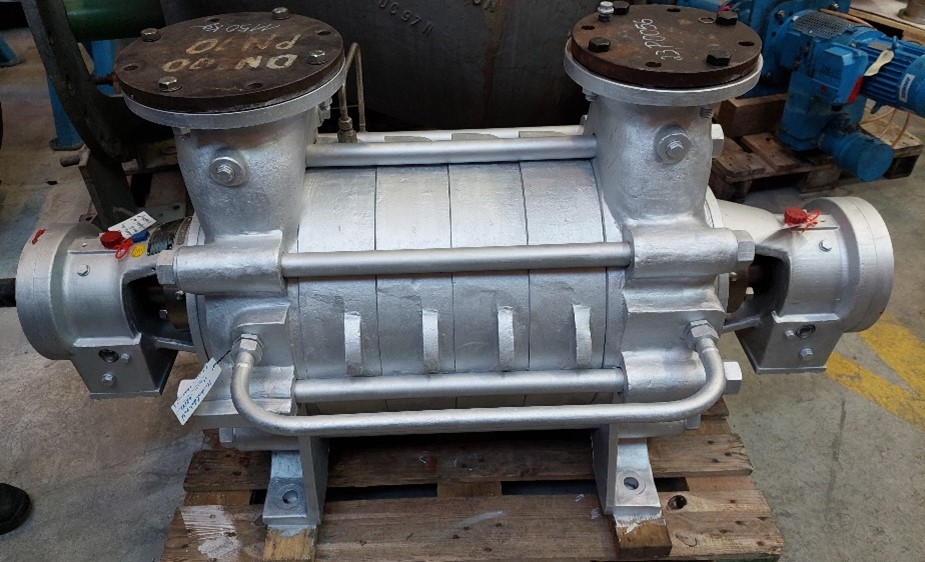
BOILER FEEDWATER PUMP EFFICIENCY IMPROVEMENT
The Challenge
A petrochemical plant in Europe was looking to save energy. The plant engineers contacted Boulden to evaluate the potential savings from upgrading the wear parts of a BB4, radially split, 5-stage boiler feed water pump during a general overhaul. The pump consumed 226 kW (303 HP) during normal operation. The image on the right shows the assembled pump.
Although this pump had been reliable over the years, the original metal wear rings used large radial clearances. With metal rings, reducing the clearance in a pump increases the risk of seizure. In contrast, high quality composites are low-friction, non-seizing, non-galling, and dimensionally stable. They can therefore typically operate at 50% of the clearance of the original metal wear rings safely and reliably. Because the wear rings control leakage between pump stages, reducing the clearance increases pump efficiency.
The question from the engineers was, “how much power can we save?” For any pump, the percentage efficiency gain is a function of the impeller specific speed. For this boiler feed pump, Boulden estimated a potential efficiency gain from the upgrade of 4-5% with a reduction in the wear ring clearance. The percentage improvement is multiplied by the amount of power consumed to obtain the total power savings. Logically, bigger pumps with lower specific speeds tend to offer the best opportunities for power savings.

The Solution
The composite material chosen for this application was Vespel® CR-6100 due to extensive application in boiler feedwater pumps. Boulden recommended reducing the clearance to a minimum value of 0.25 mm (0.010”) at the wear rings, inter-stage bushings, and the balance drum bushing. Boulden supplied raw material and worked with the plant personnel to make machining drawings for the new components. The material was machined and installed in the plant repair shop, the pump assembled, and put back into service.
The Results
To check the results, the plant performed a performance test to measure the new efficiency. They found an efficiency gain of 4.2% when the pump operated at BEP. This translates into significant savings every year, plus a CO2 reduction of nearly 40 tons/year. The chart on the right shows the performance of the pump after the upgrade (solid blue line) compared to the original performance (broken red line).
Power plants, refineries, paper mills, fertilizer plants, and petrochemical plants have all upgraded boiler feed water pumps with materials from Boulden. If you are looking for energy savings from your pumps, contact Boulden today with your pump details.
